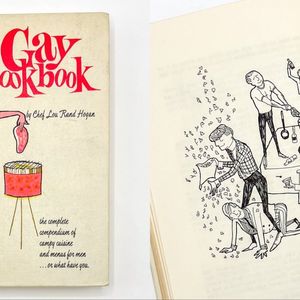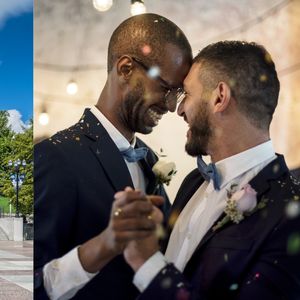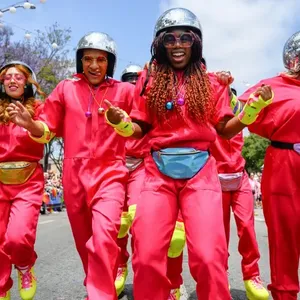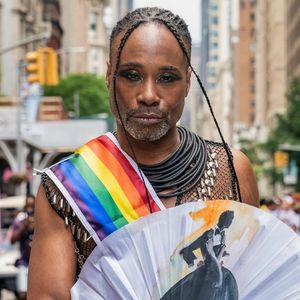Voices
CONTACTStaffCAREER OPPORTUNITIESADVERTISE WITH USPRIVACY POLICYPRIVACY PREFERENCESTERMS OF USELEGAL NOTICE
© 2024 Pride Publishing Inc.
All Rights reserved
All Rights reserved
By continuing to use our site, you agree to our Private Policy and Terms of Use.
The crowing began as the first marchers stepped onto the west lawn of the Capitol. "They said you wouldn't come!" screamed a voice at the microphone. "This march is a passing of the torch to a new generation, a new way of doing things," said another to a press scrum backstage.
Indeed, the young organizers of the National Equality March have a right to be proud. Proud for pulling us off our duffs, 200,000 strong. Proud of doing it for a fraction of the cost of prior marches. Proud of creating a more serious event -- less of a pride parade "celebration" and more of a focused, political affair. And proud of doing it largely on their own.
While the Gay and Lesbian Alliance Against Defamation lent offices and other resources -- as did other groups -- to these organizers, without a doubt this "new generation" gets full credit for higher-than-expected turnout, and in a more lasting sense, for demonstrating that the rules of our movement are changing.
In the coming weeks, we will undoubtedly hear much more about this emergence of "Gay 2.0": leaner, meaner, and more ready for the equality fight in 2009, some will argue, than organizations with more resources and longer institutional histories. Indeed, their use of today's advocacy tools would seem to validate that claim. Almost the entire effort was put together on a shoestring by young activists online.
To the Gay 1.0 crowd, "online" often gets interpreted as sending out e-mails to Listserv or Facebook groups about actions we direct them to take. The same old "vertical" (that is, top-down) style of politics, but online.
To Gay 2.0, online means savvy uses of social media that engage "grasstop" thought leaders. These leaders aren't elected by boards, but self-selected and eager to use their personal networks (when asked) to promote activism. As it did this week, the horizontal style of such organizing succeeds in pushing up attendance dramatically for less effort and cost than more traditional efforts.
Over the summer months, I've heard folks in the movement recall the
1987 march, the 1993 march, the 2000 march. Each of those marches, they
remembered, required months and months of preliminary work to build
consensus on themes, on speakers, on logistics -- on just about
everything. Because of all this process, many thought it couldn't be
done with only four months.
Under the old rules of vertical
organizing, they were right. Calls to action for each group to mobilize
members and outreach to others, who in turn mobilize theirs if their
leadership embrace the priorities and themes of the march. But the old,
vertical rules were abandoned this time. In Gay 2.0, horizontal is the
new vertical.
This take-away will be the obvious lesson of the
National Equality March. For national LGBT advocacy organizations -- including GLAAD -- it will, or should, ring out as a wake-up call. Some
will say it is about the tools we use, but in fact, it's about the
people. Digital activists are not "joiners," but they can be roused to
specific actions. Engagement with online communities isn't about adding
to member rolls or building e-mail lists -- it's about building
campaigns that harness horizontal power instead of leaving tremendous
capacity on the table by not understanding and utilizing these
resources.
A second important lesson emerged from the buses that
rolled into the Capitol on Sunday. It was a cautionary tale for the
digital dynamos of Gay 2.0 about demographics and politics. Shockingly
few participants coming to Washington were African-American, Latino, or
Asian Pacific Islander. The fact that the population of Washington, D.C.,
has one of the highest concentrations of African-Americans in the
nation made that lack of diversity all the more jarring.
The
persistent gaps that challenge our movement in terms of diverse
outreach and leadership now threaten to undermine our embrace of
digital organizing. Like the digital divide that excludes millions from
robust access to digital technologies in this country, we must face and
address our own networking divide. It is a divide that leaves many of
our community members and allies behind because we have not done the
work necessary to bring them into our networks -- and to become part of
theirs.
Addressing that divide is naturally a matter of inclusion,
fairness, and social justice, but there's a practical political point
too. Effective advocacy in 2009 has to include reaching out and
engaging with all of those whose support we need to win our ballot and
legislative fights. If we don't, we lose.
To all those calling
themselves the Post-Prop. 8 generation, take heed of these lessons.
Latinos, for example, were 19% of the vote in California. During
Prop. 8, almost no opinion research was done on Spanish-speaking Latinos,
nor did adequate movement resources go into developing messages to this
community. With the exception of some amazing local work in places like
East Los Angeles, Gay 1.0 just didn't get it.
In this way, the
vulnerabilities of Gay 2.0 begin to look a lot like those of Gay 1.0.
The networking divide means that an over-reliance on our old networks
will predictably fail to engage those we need to prevail in our fight
for equality. So if we like the new style of organizing, what are we
going to do to make sure that we do it right?
Make no mistake: The
failure of Gay 2.0 (just like Gay 1.0) to sufficiently engage our
racial and ethnic diversity -- straight and gay-- is a point of political
importance. It hurts us. Just go to blog posts by African-American
thought leaders and read their thoughts on the LGBT community's
criticism of President Obama. Have we changed their hearts and minds?
A
new way of doing things is cool. A new approach is seductive. Ideas and
energy and nimbleness are all needed. "Horizontal is the new vertical"
sounds swell and our hats go off to the organizers of the National
Equality March. But between the excited cries of "Yes, we did," there
should also be some sober reconnaissance of what we didn't do. Like
the continuing difficulty in overcoming our own divides and exclusions.
Want more breaking equality news & trending entertainment stories?
Check out our NEW 24/7 streaming service: the Advocate Channel!
Download the Advocate Channel App for your mobile phone and your favorite streaming device!
From our Sponsors
Most Popular
Here Are Our 2024 Election Predictions. Will They Come True?
November 07 2023 1:46 PM
17 Celebs Who Are Out & Proud of Their Trans & Nonbinary Kids
November 30 2023 10:41 AM
Here Are the 15 Most LGBTQ-Friendly Cities in the U.S.
November 01 2023 5:09 PM
Which State Is the Queerest? These Are the States With the Most LGBTQ+ People
December 11 2023 10:00 AM
These 27 Senate Hearing Room Gay Sex Jokes Are Truly Exquisite
December 17 2023 3:33 PM
10 Cheeky and Homoerotic Photos From Bob Mizer's Nude Films
November 18 2023 10:05 PM
42 Flaming Hot Photos From 2024's Australian Firefighters Calendar
November 10 2023 6:08 PM
These Are the 5 States With the Smallest Percentage of LGBTQ+ People
December 13 2023 9:15 AM
Here are the 15 gayest travel destinations in the world: report
March 26 2024 9:23 AM
Watch Now: Advocate Channel
Trending Stories & News
For more news and videos on advocatechannel.com, click here.
Trending Stories & News
For more news and videos on advocatechannel.com, click here.
Latest Stories
After decades of silent protest, advocates and students speak out for LGBTQ+ rights
April 13 2024 10:52 AM
11 celebs who love their LGBTQ+ siblings
April 13 2024 10:33 AM
The 10 most challenged books of last year
April 13 2024 10:06 AM
Mary & George's Julianne Moore on Mary's sexual fluidity and queer relationship
April 13 2024 10:00 AM
Investigation launched after man screams homophobic slurs at queer couples on D.C. metro
April 13 2024 9:59 AM
Germany makes it easier to change gender and name on legal documents
April 12 2024 6:06 PM
A youth's call to action on this Day of NO Silence
April 12 2024 5:00 PM
Democrats introduce resolution in support of LGBTQ+ youth
April 12 2024 4:35 PM
Colton Underwood is hoping to create a gay reality TV dating show
April 12 2024 4:28 PM
Idaho closes legislative session with a slew of anti-LGBTQ+ laws
April 12 2024 1:39 PM

Pride
Yahoo FeedElevating pet care with TrueBlue’s all-natural ingredients
April 12 2024 1:39 PM
Watch Jimmy Kimmel's hilarious LGBTQ+ campaign video: 'You can't spell Biden without Bi'
April 12 2024 12:00 PM

Pride
Yahoo FeedCreating erotic art and advocacy with adult entertainer Cody Silver (EXCLUSIVE)
April 12 2024 11:39 AM
How I navigated through religious trauma
April 12 2024 11:00 AM
















































































